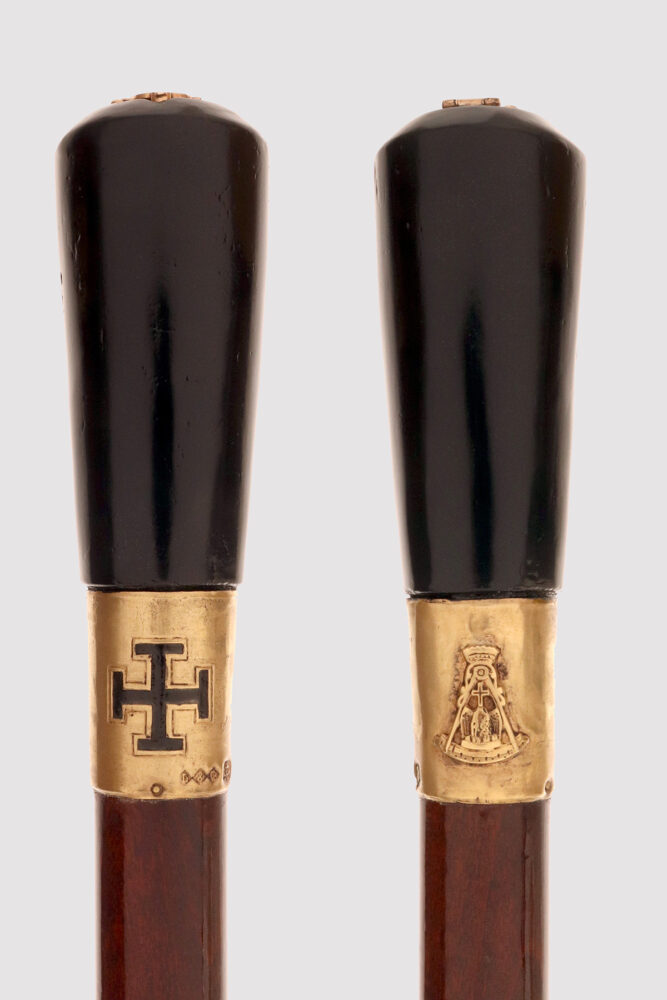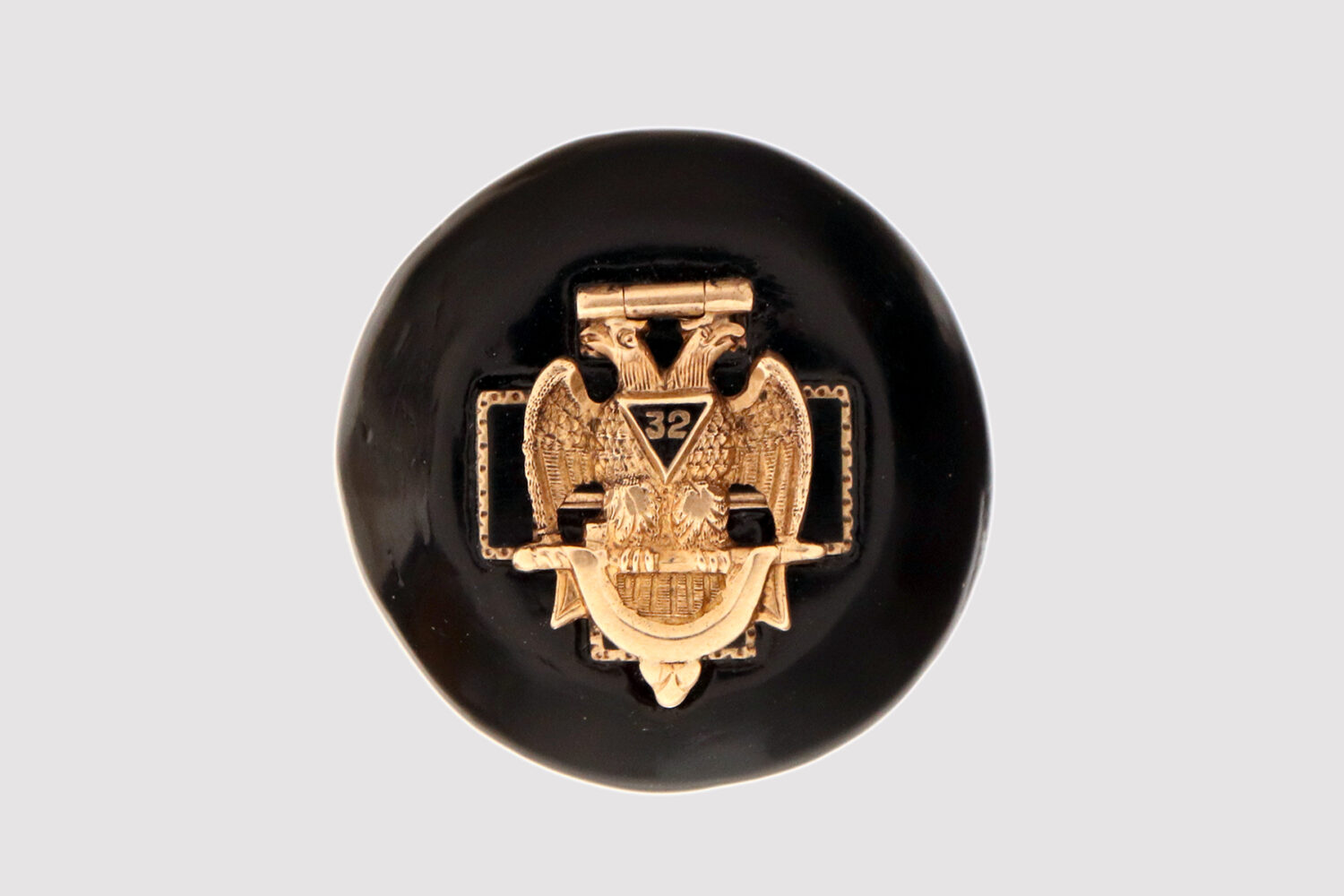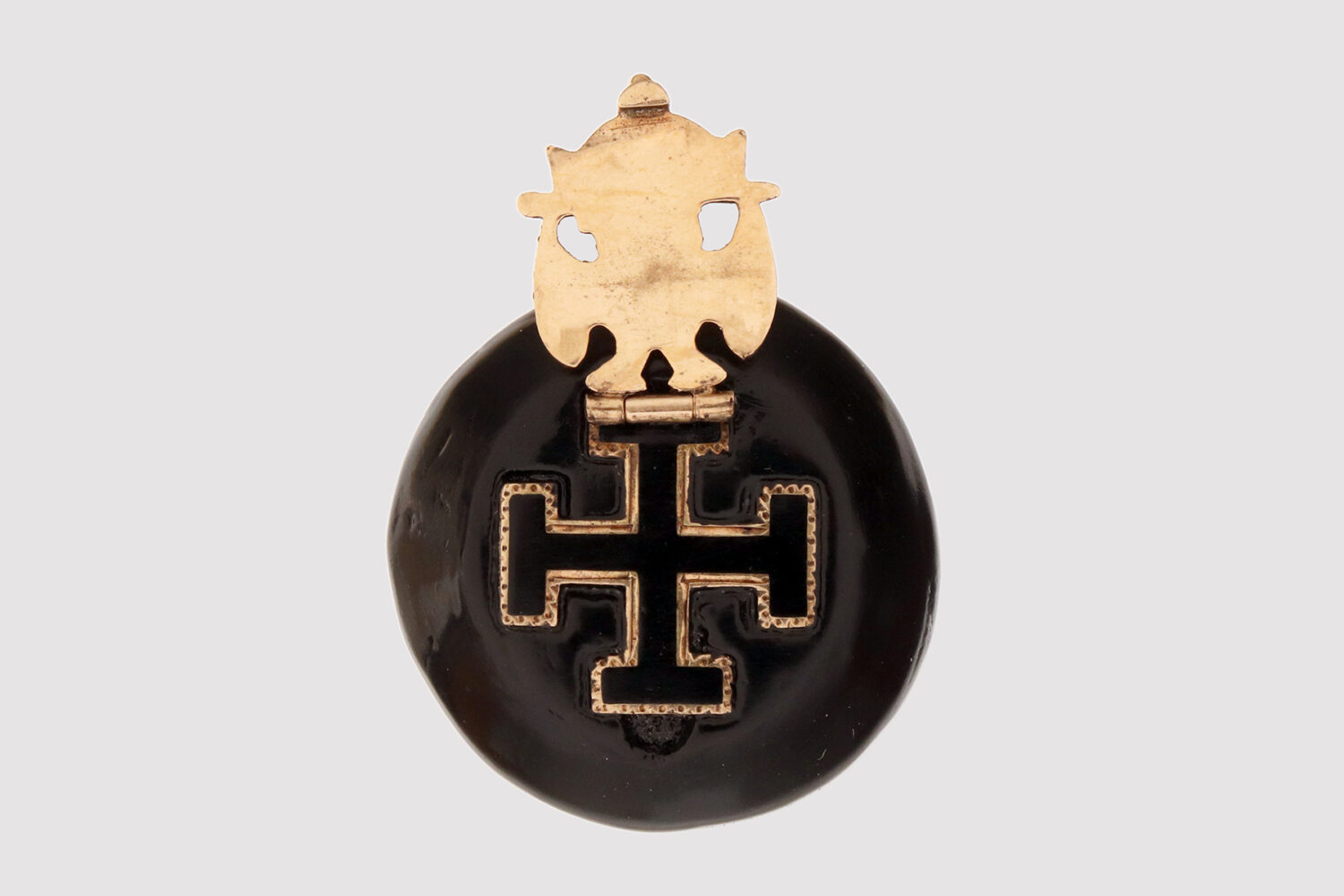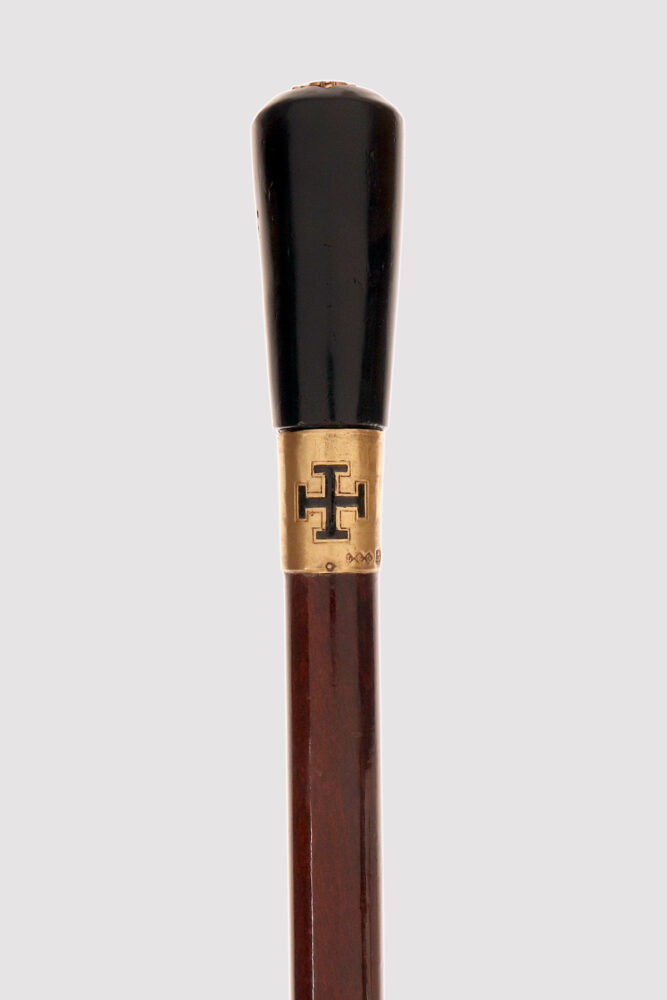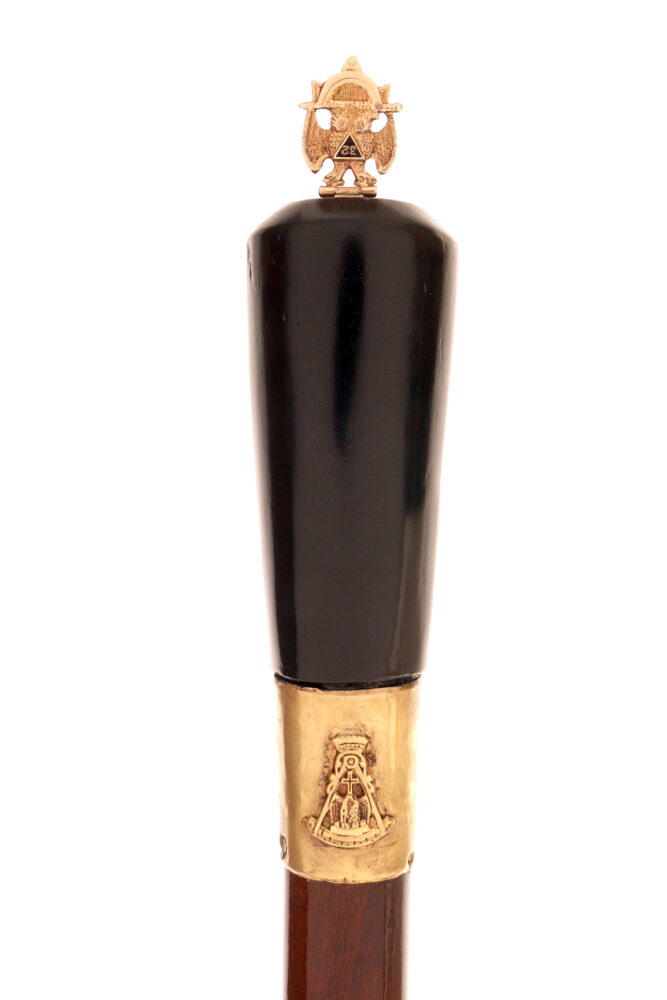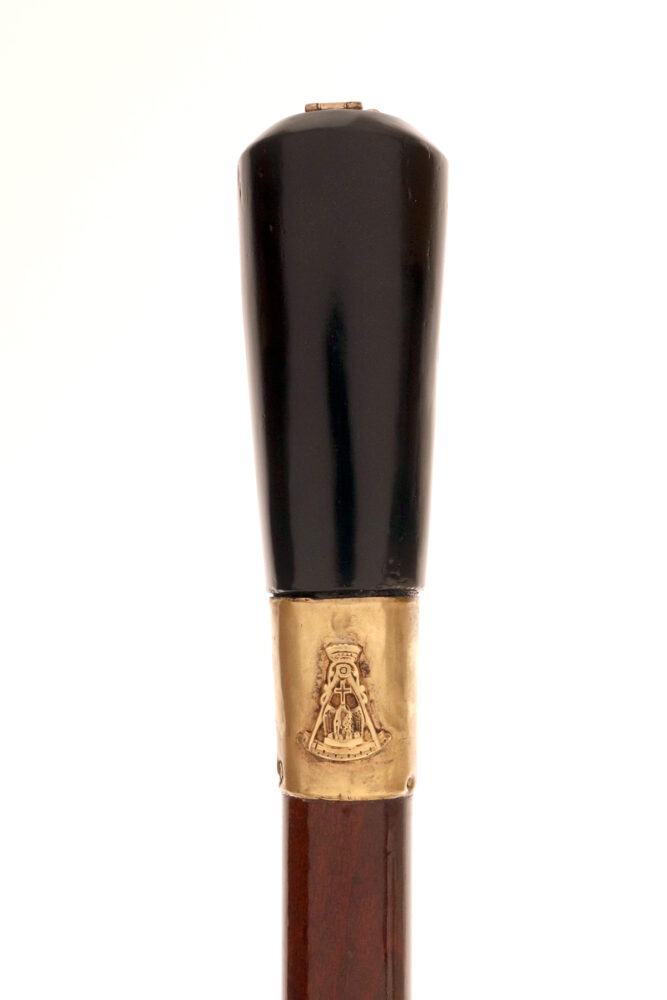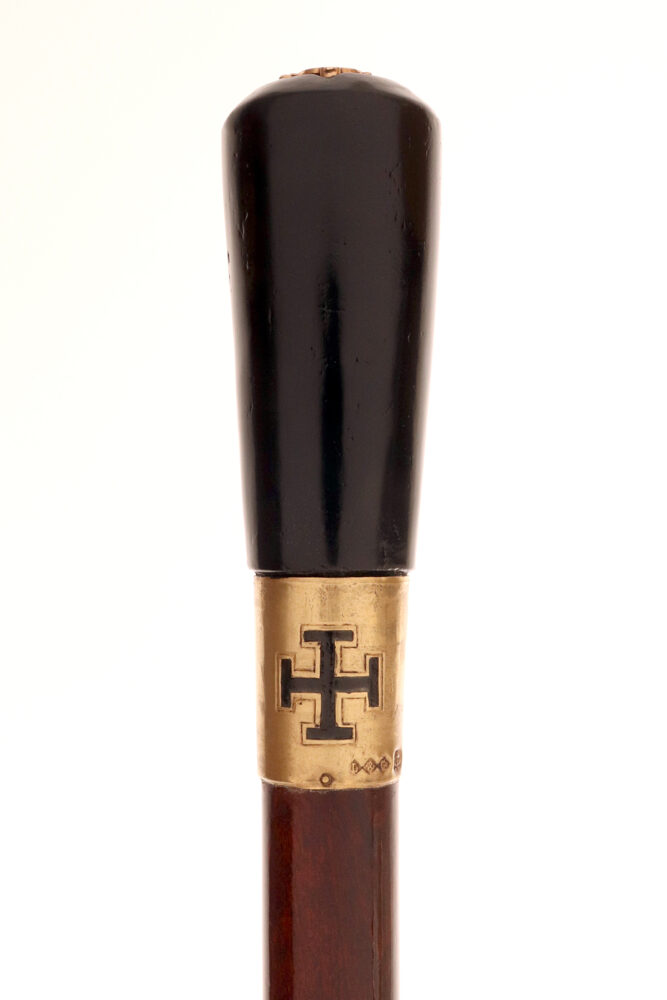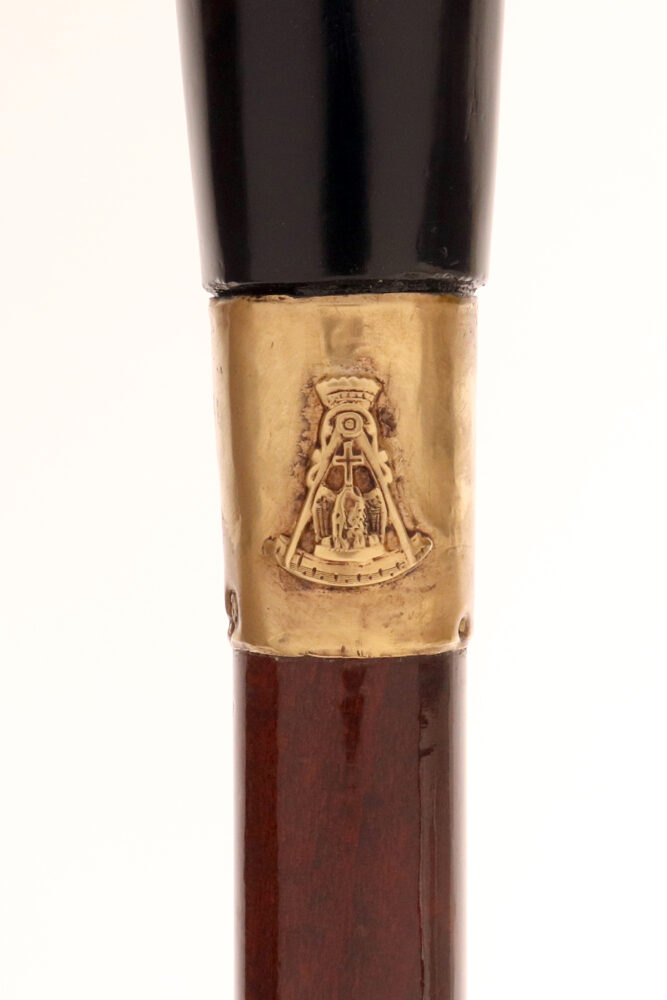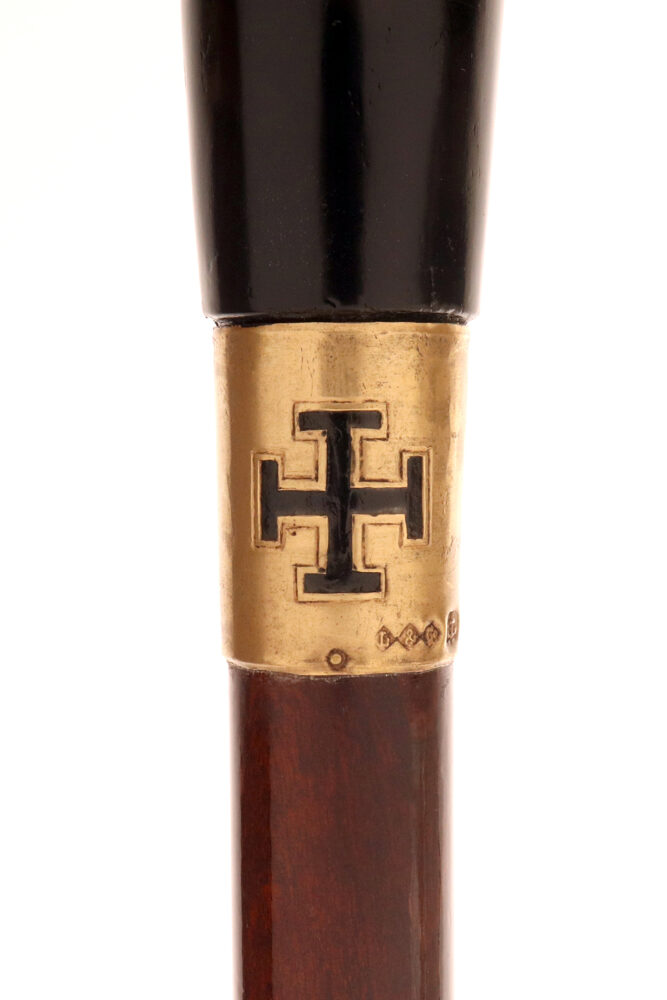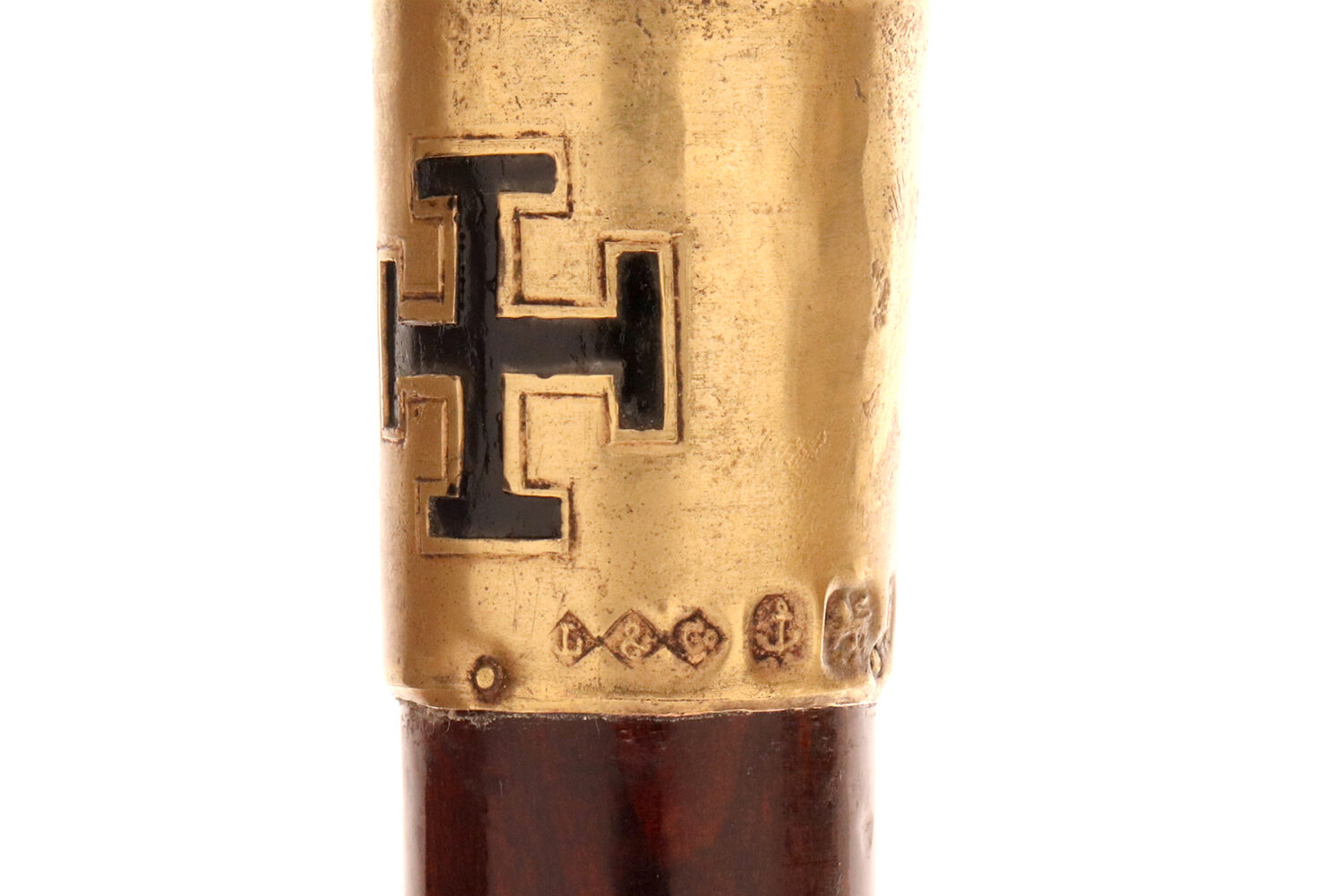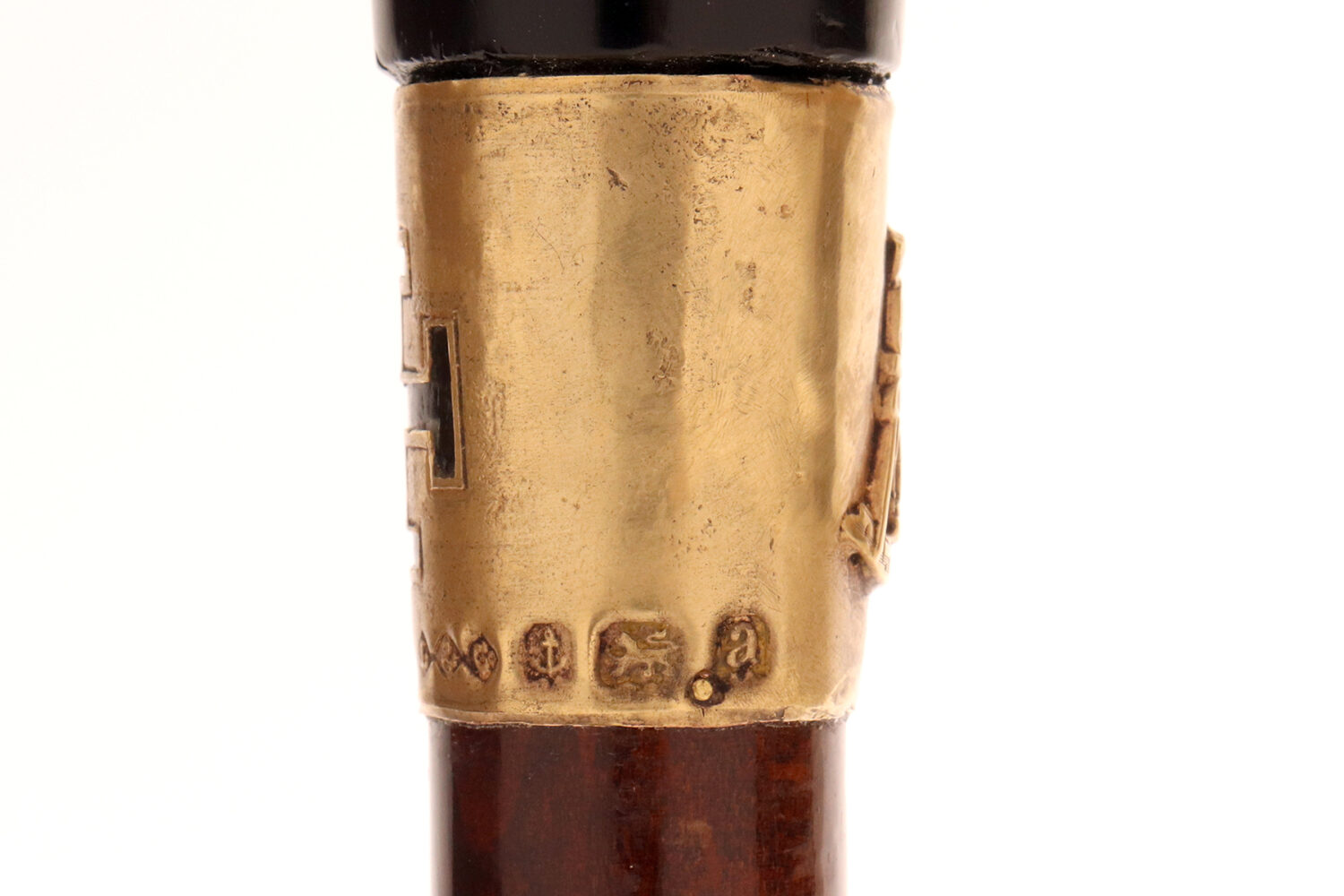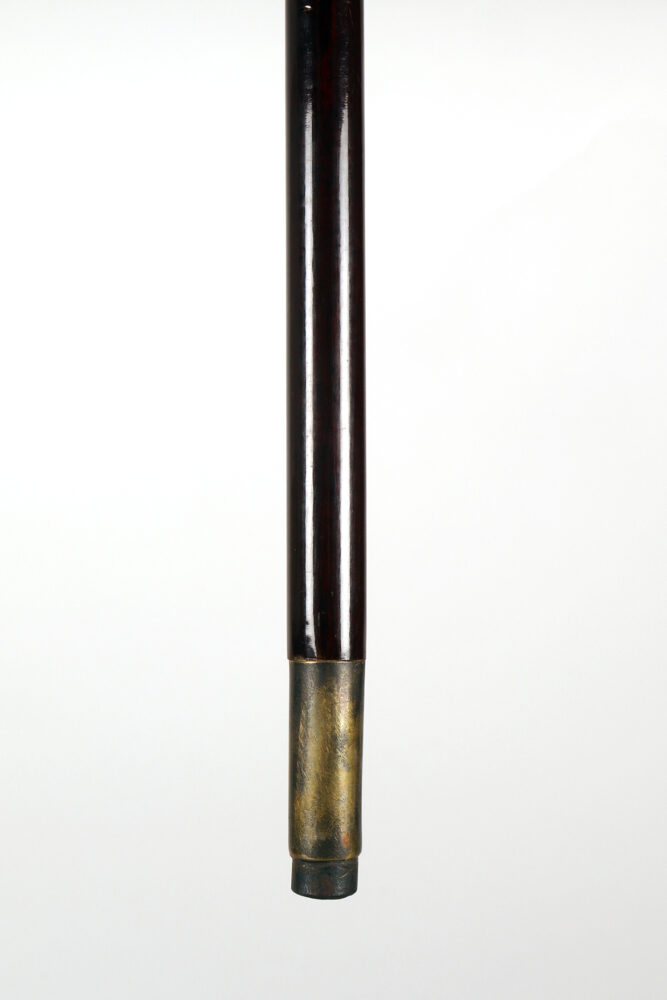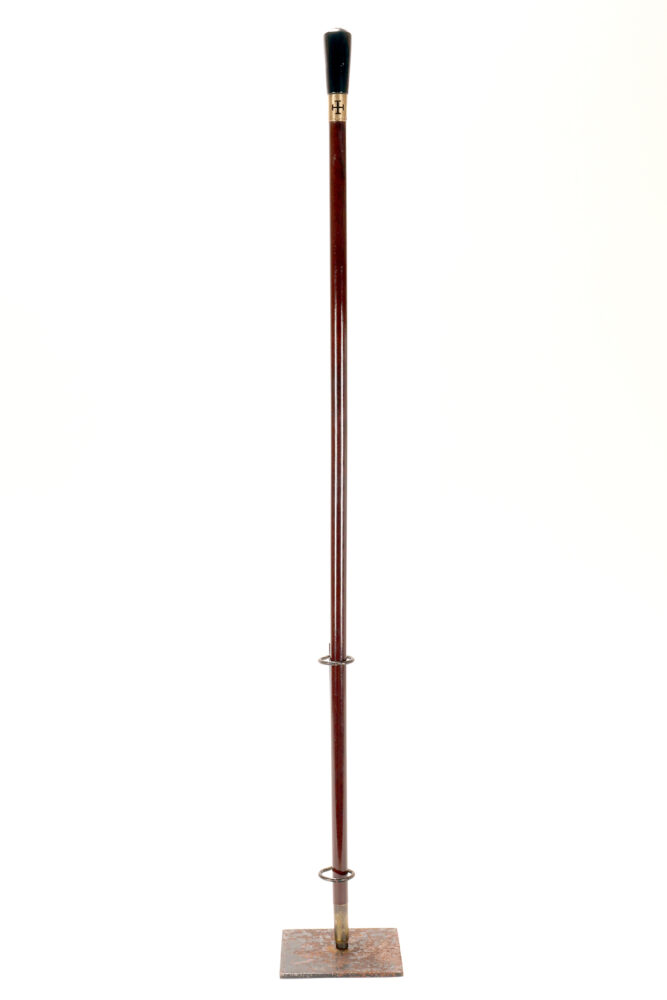A 32nd degree Scottish Rite Masonic staff. Signed Liberty & co, Birmingham United Kingdom, 1900.
Birmingham, United Kingdom 1900.
6500 EURO
Scottish Rite Masonic L, 32nd degree walking stick. The handle is in the shape of a milord in black onyx, with an openable 14kt gold and enameled coat of arms in the shape of a cross with a double-headed eagle, surmounted by the number 32. The gilded silver band features a perforated cross on one side through which the onyx can be glimpsed. On the reverse of the band is the compass, symbol of the Rosicrucian Order, with the figure of a pelican feeding her chicks. Snake Wood shaft, metal ferrule.
Hallmarked Liberty & Co, London, made in Birmingham, UK, 1900.
In the Scottish Rite, the double-headed eagle symbolizes the search for truth through duality and the union of opposites. The two heads represent the rational and intuitive minds working together to achieve wisdom. The eagle, with its wings spread, also symbolizes freedom and spiritual elevation. The number 32, in the Scottish Rite, indicates the degree of “Secret Master.” This degree represents an advanced stage in the Mason’s learning and spiritual evolution. The cross can appear in various contexts in Masonic symbolism, but in relation to the double-headed eagle and the 32nd degree, it could refer to specific ritual or allegorical elements of the Ancient and Accepted Scottish Rite. It could represent suffering, rebirth, or redemption. In short, the combination of these elements in Masonic symbolism refers specifically to advanced levels of initiation. Arthur Lasenby Liberty (1843–1917) was born in Chesham, Buckinghamshire, into a world of textiles. In 1875, he opened his own shop on Regent Street (where it remains today), selling products from the Far East. For years, Liberty & Co. was synonymous with Art Nouveau and maintained business relationships with prominent artists and designers, including Scottish designer Charles Rennie Mackintosh and William Morris. In 1898, Liberty & Co. began producing its own silverware, primarily in the Art Nouveau style, labeled “Cymric” and primarily designed by Knox. In 1890, Liberty & Co. went public, with Liberty as the main shareholder (and by then a wealthy man). Knighted by King George V in 1913, he died in 1917, and Knox designed his tombstone in the Celtic Revival style.
33,5” – 85 CM H 3,5” – 8,5 CM L 1” – 2,5 CM D
REF: M6168

